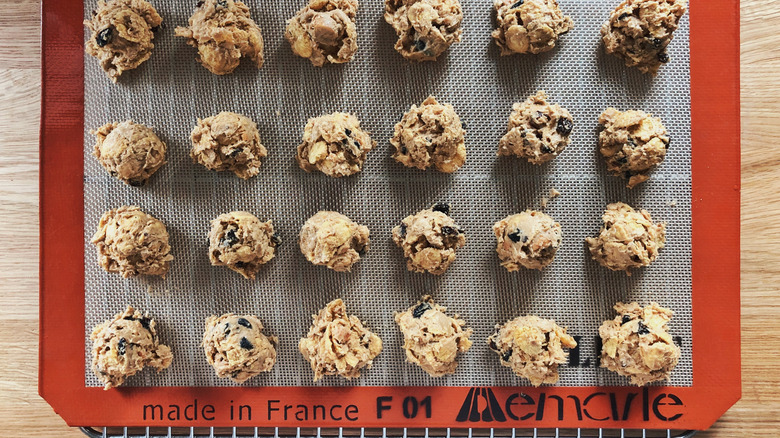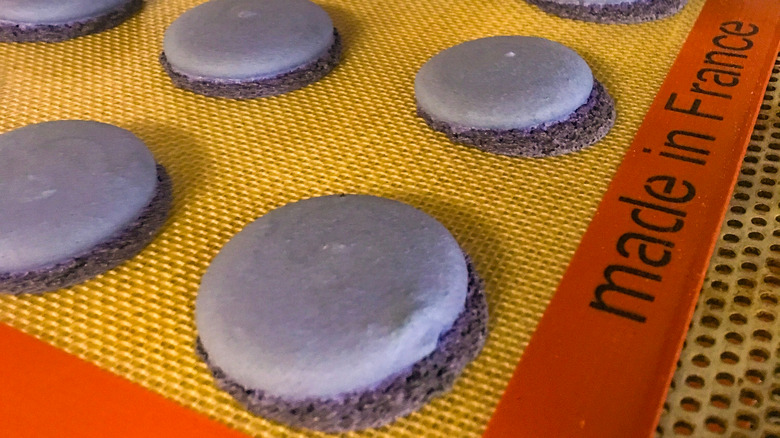The One Thing You Should Never Use Your Silpat Silicone Mat For
Home kitchens have become miniature versions of restaurant kitchens with professional appliances and accessories once only used by chefs. Silicone baking mats, referred to by many by the brand name Silpat, are commonly used by home bakers and a frequent item added to registries for newlyweds setting up their home kitchens.
Silicone mats are nonstick, reusable baking surfaces that replace parchment paper. They are made of food-grade silicone with a heat-conducting mesh that evenly distributes heat throughout the cookie sheet. While Silpat manufacturer Sasa Demarle says the durable mats can withstand temperatures up to 480 F, they are not intended to be used "on direct heat, stovetops, or hot plates." That includes the grill, the bottom of the oven, and under a broiler.
Although that limits Silpats slightly, silicone mats can also be used in microwaves and freezers. An octagonal microwave version fits on the turntable better than rectangular versions. With proper care, the mats should last years, allowing bakers to use them thousands of times.
What are the proper care instructions, you ask? Silicone mats should be wiped with a soft cloth and rinsed with water. If you've used the mat for something smelly like fish, they can be cleaned with a weak soap solution, but the mat should feel greasy even after a proper cleaning. You need to store them dry, so either shake off excess water and air dry them or place them in a 212 F oven for a few minutes before storing flat or rolled.
Never cut a Silpat
According to Silpat, mats should never be greased, cut, torn, used as a cutting mat, or folded. Cutting the mat may introduce fiberglass mesh particles into your food. Silicone mats can successfully be used beyond your baking endeavors. Cooks have applauded the results from roasting vegetables, and the slick surface prevents stubborn items like fish skin from sticking to your baking sheets, saving clean-up time and a lot of elbow grease. Since odors can linger on the mats, it's advised that you dedicate one to savory items like seafood, so your cookies don't taste fishy.
While cooks like to use mats when baking recipes or melting chocolate or caramel to allow the product to spread, the greasy surface can alter the results for specific recipes. Chocolate chip cookies baked on a silicone mat can spread up to one-quarter inch more than those baked on parchment resulting in flatter, crispier cookies. That's great if that's the intended outcome, but it can lead to overcooking and burning if you aren't aware.
Unlike silicone, parchment paper gives the cookies something to grab onto, preventing the dough from spreading and keeping your cookies thicker. Silpat advises using a "non-insulated perforated cookie sheet or pan" to allow the baking sheet to heat properly since the mats provide some insulation already.

